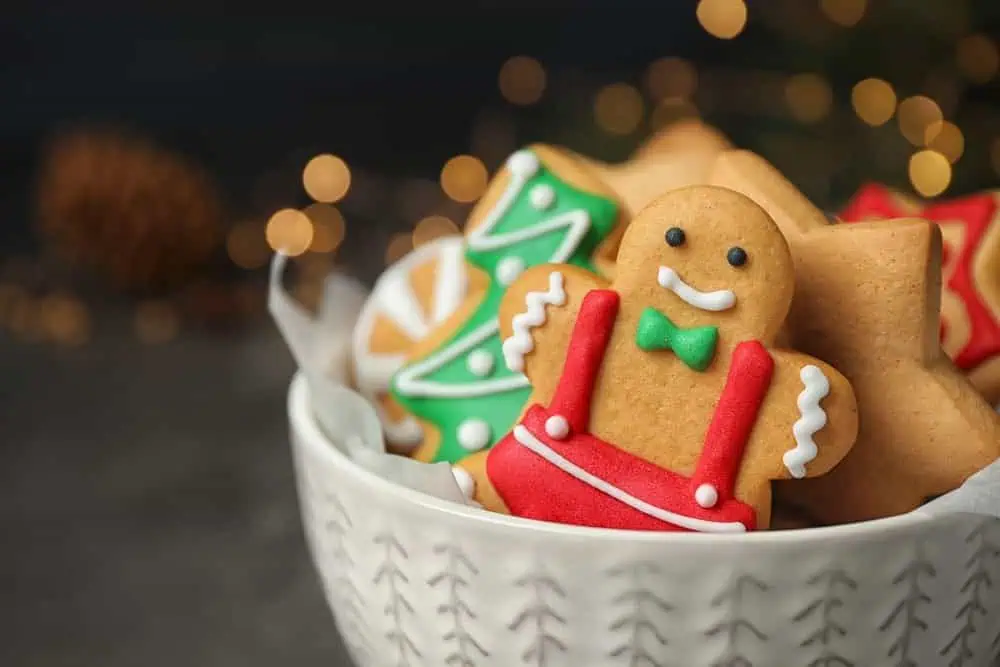Are you already overloaded in the run up to the festive season? Getting ready for the annual cookathon? ‘Tis the time of mass catering for friends, family, colleagues and associates. It’s also unfortunately the time of a food poisoning spike – due to all that extra catering! So, to help make sure that you get the festive break you deserve, here are my Top Ten Tips- The 10 C’s of Festive Food Safety.
1. Choosing
- This is an important first step. Pick your ingredients wisely; do not purchase high risk/ perishable foods too far in advance.
- Be aware of ‘use by’ dates and the subsequent ‘consume within’ guidance on products- this is about the number of bacteria in food – which we cannot see touch, smell or taste.
- Best Before dates are just that. The foods taste best before that date – but will not make you ill unless it has gone mouldy!
- Check that chilled food is indeed cold and that frozen food is frozen solid- these foods are ideally transported home in a cool bag – we know how long the queues are at the moment!
- Also be mindful of how quickly you can use the food. 2-for-1 offers are great but only if you can eat the food safely or without wasting it. It is best to keep raw and cooked foods apart and to keep food separate from other purchases such as cleaning products.
2. Chilling
- High risk perishable, protein rich foods need to be kept chilled; and not booted out of the fridge in favour of the wine & beer. Keeping foods chilled slows down the multiplication of harmful bacteria – it does not kill them!
- Do not overstock the fridge. Domestic fridges work by air circulating – if they are jam packed the air will not be able to circulate!
- If you need to defrost foods before cooking this should be done in the fridge. If defrosting takes place at room temperature it can cause a rise in bacteria – so do plan enough time for this to take place; cold water in the sink can speed up defrosting but make sure you disinfect the sink afterwards.
- Do not cook food that has not be thoroughly defrosted or has ice crystals in it- as the food will not cook properly.
3. Cross contamination
- Cross contamination is one of the most common causes of food poisoning. It happens when harmful bacteria are spread onto food from other food, surfaces, hands or equipment.
- The harmful bacteria often come from raw meat/ poultry, fish , eggs and unwashed veg/salad. Other sources include people handling the food, pests, equipment, cloths or soil
- To control cross contamination store foods separately, wash & disinfect hands, equipment & surfaces in-between tasks.
4. Cooking
Ensure all foods are cooked thoroughly- we all want to be seen as domestic gods and goddesses at this time, but cooking for more people than we are used to requires some planning. Take note of cooking time and temperature combinations and make sure foods are piping hot all the way through! It is better to delay the meal than make people ill. I would rather have hard roasties than pink turkey too!
5. Cooling
- At this time of the year we do tend to cook a little too much! So if you need to cool down do so quickly. You can take the food out of its cooking container, spread it out, portion it, if rice you can run under cold water!
- Once cooled – store in the fridge and consume within 3 days; still eating the turkey on New Year’s Day is not great. If you have cooked way too much then think about freezing the food straight after cooling- this keeps it safer for longer & creates less waste.
- If you need to reheat- just reheat the portion you need and do it quickly!
6. Cleaning
- This is in 2 parts. First the cleaning of us! Thorough effective hand washing and wearing clean clothes.
- Hand-washing is fundamental in food safety, after all our hands touch everything! Use plenty of warm water, soap and be thorough with nails, thumbs, wrists and palms. Dry your hands on a clean cloth- not the tea-towel. It is best to remove jewellery & watches.
- Second, cleaning of equipment and your premises. This is the difference between being visually clean – the hot soapy water bit and then the disinfecting bit, the removal of bacteria. For example using an antibacterial cleaner on items that have been in contact with raw foods – a dishwasher is ideal for this. If using sprays make sure they are food safe (not containing bleach or fragrances), ensure a good coverage and use a clean cloth!
- It is best to clean and clear as you go!
7. Other Contaminants
Keep harmful things out of food- physical items such as hair, glass, packaging , wrapping, pen lids. If it does not need to be in the kitchen when you are preparing then keep it away!
8. Cereals, Celery & Crustacea- and the other allergens not beginning with C
If serving processed or packaged foods – do keep the labels. Then if someone asks what’s in the food you can confidently tell them rather than guessing.
9. Care
There are some foods that need a bit of extra care! Do not serve rare burgers/ sausages/ offal/ white meat/ eggs; these will all still contain harmful bacteria
10. Lastly stay CALM
Safe food is down to a bit of planning. The more calm you are the more you will enjoy it. Or if all else fails, call in the caterers!
photo: avanzero


Have fun this Christmas but be food safe too!! Fab food safety tips* from @WomensBiz http://t.co/FKXDKHMI (*Sorry for the #EnvH geekiness!)
RT @NewsFromRedCat: Take a look at an article from @RedCatSarah on Festive Food Safety; http://t.co/ZPNaZNCw
People often let their guard down at times like Christmas don’t they, all through the year great cooks and mums in the kitchen always stay on the ball when it comes to making sure their food stays safe for them and for whom who consume it.
By all means enjoy these times of festivity, but do remember the potential threats of food will remain no matter what time of year it is.